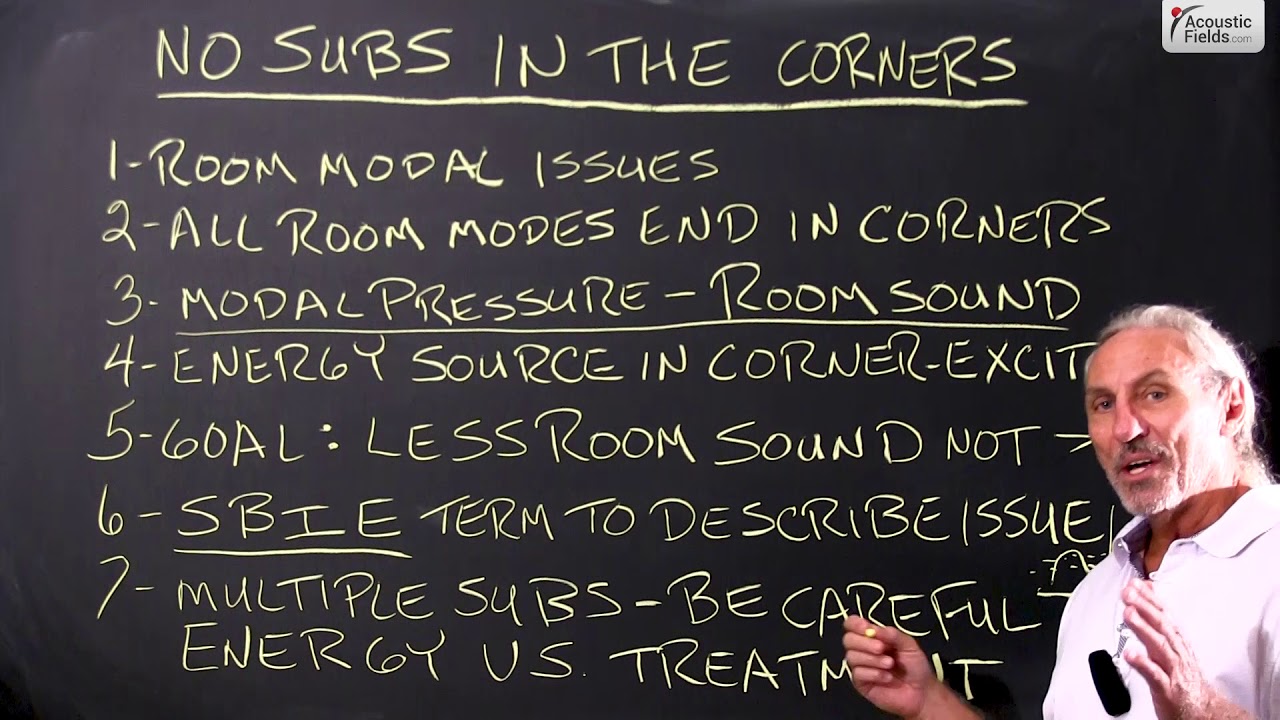Let’s talk about no subs in the corners of your room. Please. I see this every day and you don’t want to do this. And there’s a reason why some manufacturers and speaker manufacturers tell you to put the sub in the corner of the room.
The first reason is, you don’t have anything in the corner of the room. So it’s easy to put something in a place you don’t have something else. So it’s easier for you to make a buying decision on another sub. And don’t do it, okay? We know that the room model issues are throughout the room. We also know that all room modes end in the corners of the room.
So why would we put an energy-producing device in the worst possible place in the room where all the unwanted modal pressure issues exist. Why would we want to disturb that? Why would we want to excite that? Why would we want to increase the problems that that particular area of the room produces?
Another reason they want you to put the sub in the corner of the room is because you are using room sound and speaker sound together so you get a bigger push, you get a bigger amplification, you get a bigger gain. But it’s speaker and room sound. That’s not the goal. We want speaker sound. We don’t want room sound. The goal in acoustics is to get rid of the room, right?
So modal pressure in the room is room sound. We don’t want that. We want less room sound. Our goal is to have more speaker and less room. We know that the energy source in the corner of the room will excite it, the goal is less room sound. We even have a term called speaker boundary interference effect for this phenomenon. Yet I see constantly in the literature, I see constantly in the room forms that you send in. I even had a room form the other day where the guy had 8 subwoofers in the corner stacked, two on top of each other.
So don’t buy into this culture of putting the subwoofer in the corner. And definitely don’t buy into the culture of multiple subs will smooth out the frequency response. Yes, technically it will but the smoothness, the level of smoothness that you get in the bump is so minuscule, it’s maybe 1 or 2 dB. You can’t justify the cost of a subwoofer for 1 or 2 dB smoother frequency response. Put that money in treatment. You’ll be way better off. Use less energy, more treatment and balance it out that way. It’s better to reduce the response. 1, 2, 3 dB with treatment than it is to use more pressure in the room.
So be very careful with this. Be very careful and think through what you’re doing. Don’t buy into the claims that these companies tout because they’re trying to sell a product. Get the room, the right size and volume, get the right amount of treatment in the room and minimize the amount of low pressure energy in the room that you have because that will make your treatment cost less and it will give you a better sound quality throughout.
—
This is an unedited transcript from our video series from Acoustic Fields. There will be some errors in grammar and sentence structure that occur during this translation process.
For complete understanding and comprehension, please view the video which is included in this text. For any additional information regarding this topic or others relating to room acoustics, please contact us directly at:
P: 520 – 392 – 9486







